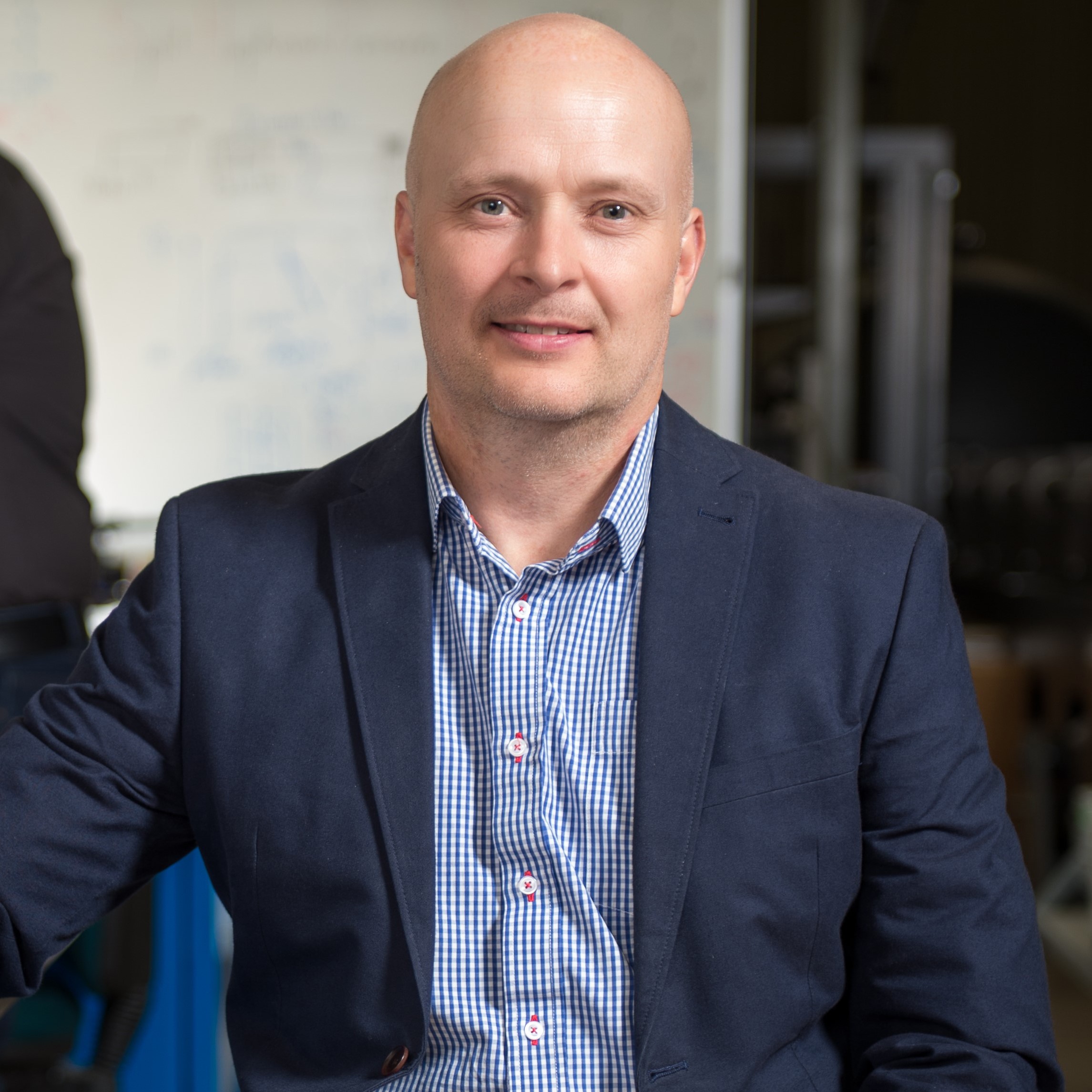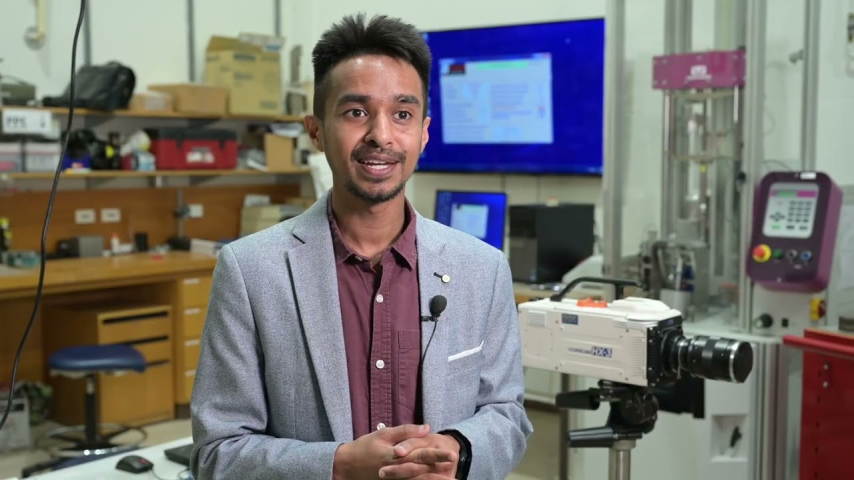
My Expertise
Impact dynamics (that is, the mechanics of what happens during a collision); extreme loading techniques; dynamic behavior of materials; shock wave theory; hydrocode analysis; biomimicry; and, structures for crush resilience
Fields of Research (FoR)
Mechanical Engineering, Aerospace Materials, Composite Materials, Numerical Modelling and Mechanical Characterisation, Condensed Matter PhysicsBiography
Paul Hazell is a professor of impact dynamics in the School of Engineering and Technology (SET) at UNSW Canberra. Paul is also the Director of the Impact Dynamics Research Group (IDRG) and Lab at UNSW Canberra, and has published extensively in the field of impact dynamics (that is, the mechanics of what happens during a collision). He is also on the editorial board for the journals International Journal of Impact Engineering (Elsevier),...view more
Paul Hazell is a professor of impact dynamics in the School of Engineering and Technology (SET) at UNSW Canberra. Paul is also the Director of the Impact Dynamics Research Group (IDRG) and Lab at UNSW Canberra, and has published extensively in the field of impact dynamics (that is, the mechanics of what happens during a collision). He is also on the editorial board for the journals International Journal of Impact Engineering (Elsevier), Biomimetics (MDPI), and Shock Waves (Springer). He also served on the editorial board for Scientific Reports (Nature Publishing Group) and wrote the reference book ARMOUR: Materials, Theory, and Design (CRC Press, 2/e, 2022,), and a popular science book on guns, entitled: 'The Story of the Gun: History, Science, and Impact on Society’ (Springer Praxis, 1/e, 2021).
His main research interests centre on the dynamic behaviour of materials and structures that have been subjected to impact / shock loading.
Paul's teaching experience includes courses on computational modelling techniques, shock wave theory, impact dynamics, and survivability. He has won several awards for his 'motivated' lecturing style. In addition, in 2023 he won the UNSW Students' Choice Teaching Award for his 'inspirational nurturing skills' with HDR students. See here for a YouTube video on the award details.
Paul has appeared in several documentaries as an expert commentator, usually around war machines. These have included:
- War Machines: Modern Warfare, WildBear, Published: 2025.
- Secret Weapons of World War II, WildBear, Published: 2024.
- How Factories Changed the World, WildBear, Published: 2020. E.g., see a YouTube example here.
- Machinery of War, WildBear, Published: 2019. E.g., see a YouTube example here.
- Combat Countdown, Discovery Military Channel (US), US, Wag TV, Published: 2012. E.g., see a YouTube example here.
- Weapons of War, National Geographic / History Channel, Published 2005. E.g., see a YouTube example here.
My Qualifications
BEng (Hons)
EngD
My Awards
Teaching / presentation awards
- UNSW 2023 Students' Choice Teaching Award Winner, 23 November 2023. See here for a YouTube video on the award details.
- NUS Best Teacher Award for contributions to an MSc course at the National University of Singapore in recognition of “dedication and commitment”, 28 March 2006.
- Winner (1st prize) of the National Lecture Competition (UK) sponsored by the Institute of Materials, with a talk on the ‘High Velocity Attack of Ceramic Armour’, 24 April 1997.
- Winner (1st prize) of The Institute of Materials South East Region (UK) Final of the National Lecture Competition (Class II), 11 April 1997.
- Winner (1st prize) of the Oxford Metallurgical Society Lecture Competition, 18 March 1997.
Recent research / paper awards (won by Paul's students!)
- Bogahawaththa M; Mohotti D; Hazell PJ; Wang H; Wijesooriya K; Lee CK, 2024, 'Energy absorption and mechanical performance of 3D printed Menger fractal structures', Engineering Structures, 305, http://dx.doi.org/10.1016/j.engstruct.2024.117774. Ranked as the Best Paper of the Year for 2024 in the category of 'Novel Structures' in the journal Engineering Structures.
- Shah S; Hazell PJ; Wang H; Escobedo JP, 2025, 'Shock wave mitigation using periodically discrete material layers of variable orientation: Experiments and simulations', Journal of Applied Physics, 137, 11, a.115905, http://dx.doi.org/10.1063/5.0249356. Editors' Featured Paper Award for the Journal of Applied Physics, Vol. 137, Issue 11, 2025.
- Bogahawaththa M; Mohotti D; Hazell PJ; Wang H; Wijesooriya K; Lee CK, 2024, 'Energy absorption and mechanical performance of 3D printed Menger fractal structures', Engineering Structures, 305, http://dx.doi.org/10.1016/j.engstruct.2024.117774. Editors' Featured Paper Award for Engineering Structures, Vol. 305, 2024.
- Serubibi A; Hazell PJ; Escobedo JP; Wang H; Oromiehie E; Prusty BG, Analysis of AFP manufactured fibre metal laminate structures under impact loading, ACAM10 – Best postgraduate student paper, 2021.
- Md Ashraf Islam, A Kader, A. Brown, P J Hazell, J P Escobedo-Diaz, X-ray and Microstructural Study of a Set of Cast Aluminum Alloys, TMS - EPD Materials Characterization Best Poster Award - 2018.
- Md Ashraf Islam, A. Brown, P J Hazell, J P Escobedo-Diaz, M Saadatfar, Deformation Mechanisms of Closed-Cell Aluminium Foams During Drop Weight Impact, TMS - EPD Materials Characterization Best Paper Award – 2017.
- Z Li, A Khennane, PJ Hazell, A Remennikov, Numerical modeling of a hybrid GFRP-concrete beam subjected to low-velocity impact loading, Best Paper Award at The 8th International Conference on Computational Methods (ICCM2017), Guilin, China – 2017.
My Research Activities
Paul's work can be divided into five key themes:
- Shock compression of condensed matter. This includes phase changes and spall as well as examining new experimental techniques.
- Dynamic behaviour of porous materials and structures. This includes looking at ways to mitigate impact energy.
- Bio behaviour and biomimicry. How can we learn from nature to inform the design of impact resilient materials and structures?
- Penetration mechanics. Understanding how projectiles penetrate into a range of matter, from low velocity to hypervelocity. This includes cratering mechanisms.
- Constitutive model development. This includes developing new models to understand dynamic processes and feeding those models with experimental data.
My Research Supervision
Supervision keywords
Areas of supervision
I supervise any projects to do with biomimicry, additive manufacturing, extreme loading techniques, and impact dynamics.
Currently supervising
| Altantsetseg,Burentogtokh | PhD | 1663 - Aerospace Engineering |
| Dong,Hang | PhD | 1661 - Mechanical Engineering |
| Ramadneh,Mohammad Raed Mohammad | PhD | 1661 - Mechanical Engineering |
| Jalali,Kamran | PhD | 1871 - Chemistry |
| Pyla,Kaushik Raj | PhD | 1661 - Mechanical Engineering |
My Engagement
Paul's Editorial Board contributions are as follows:
International Journal of Impact Engineering (2023 - present)
Biomimetics (2022 - present)
Shock Waves (2016 - present)
Scientific Reports (2022 - 2025).
Paul was also the executive guest editor for the International Journal of Impact Engineering for the Special Issue on the Impact Response of 3D-Printed Materials and Structures.
My Teaching
ZEIT 4014 Impact Dynamics
ZINT 8301 Lethality and Survivability
Location
School of Engineering and Information Technology
THE UNIVERSITY OF NEW SOUTH WALES
UNSW CANBERRA
PO Box 7916, CANBERRA BC 2610, Australia
Publications
ORCID as entered in ROS
Videos





